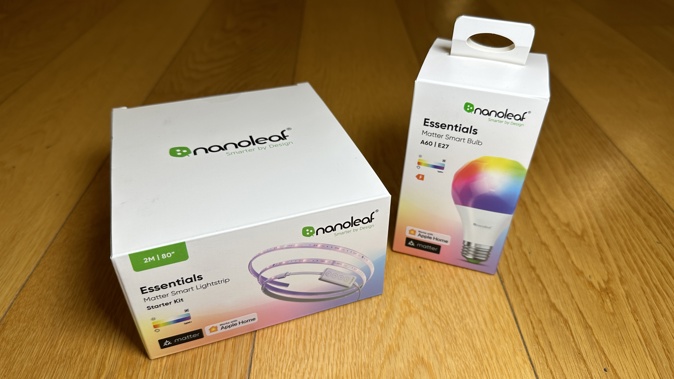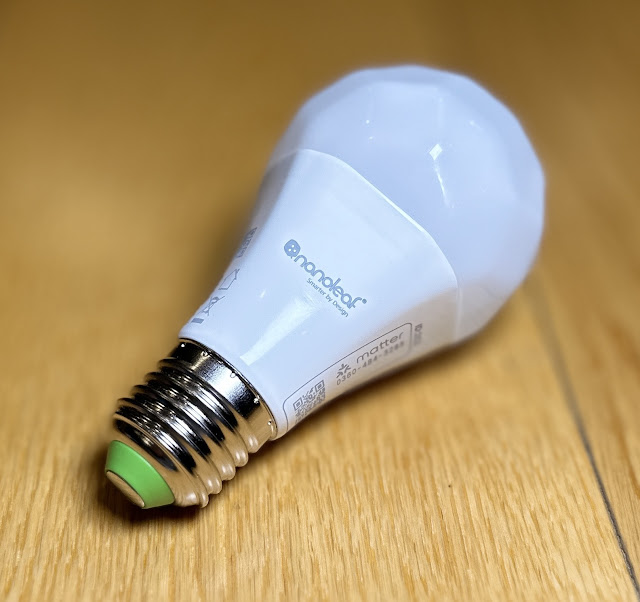
Ever since I first heard about Matter and Thread, I've been trying get my head around what Matter and Thread actually are.
I've always considered the main point of these reviews to demystify the nerdy, techspeak around all the latest and greatest gadgets out there. I try to use these products in as many real-life situations as I can so in the end, rather than listing off screeds of specs and other info you can find out for yourself just by visiting the manufacturers' websites, hopefully I can tell you about how they actually work - or don't.
Is this a thing that's going to make your life better? Or is it just new a new tech toy to waste your money on for no practical benefit? Is it fun? Or is there something else that does the same job better and cheaper?
That's why I'm determined to get to the bottom of this Matter business.
In theory, Matter is a (relatively) new protocol all the big smart home players have signed up to in an effort to get their devices to speak the same language. The idea is when you buy a smart light or security camera you should be able to control it just as easily with Alexa, Siri or Google Assistant as you can with the native app the device ships with.
This is a dramatic change from previous "lock-you-into-an-ecosystem" philosophies of the past, which were all well and good if you loved one particular brand. However, sooner or later there's going to be a device somebody else makes you want to include in your smart home setup. Enter Matter - a thawing of diplomatic relations between these ecosystems.
Thread?
Well, you know Bluetooth and Wi-Fi? Thread's another thing a bit like those. The primary focus here though is connecting IoT devices to each other as well as to the Net. In fact, the beauty of Thread is for the devices themselves to act as "border routers" - making your home network stronger, more powerful and more responsive as you add more gadgets, rather than putting more stress on an already overburdened Wi-Fi network.
At least...
I think I've got that right.
So, let's start by upgrading our lights.
I've been using smart lights from Nanoleaf for years now so I was excited to try the new Matter-Over-Thread enabled range of Nanoleaf Essentials products. Essentially (pun intended) these new bulbs and lightstrips look identical to their pre-Matter counterparts and indeed some other smart devices have been Matter-enabled with a simple firmware update.
Not so with the new Essentials range though - and as I have discovered over the last week or so, the pre and post-Matter products from Nanoleaf definitely work in different ways.
Throughout the years various Nanoleaf lighting systems have flirted with both Amazon Alexa and Google Assistant compatibility to varying degrees. For instance, I have a set of Nanoleaf Shapes in my garage that light up when one of us drives in at night. This is thanks to an Alexa routine that tells the Shapes to activate when a motion sensor detects any movement in my garage.
But what has always worked really well is Apple HomeKit integration. Yes, there's a native Nanoleaf app you can use to set up the devices but it's actually more straightforward (and faster) to do it with the Apple Home app. Recent Apple HomePods and Apple TV boxes are also Matter enabled and as a result I still find Siri to be the best way to set up and control my Nanoleaf lights.
For the purposes of this review I was sent a 2-metre Matter Lightstrip Smarter Kit and four Matter A60/E27 Smart Bulbs in order to simulate the kind of smart light enhanced room you might be going for at your place.
Setup was easier than ever, initially using the Apple Home app to scan the unique QR codes printed on the manual for each light (there's also a code printed on each bulb itself). This process lets you assign each light to a room, renaming them if you wish and using the Home app you can group lights together to control them all at once.
This all went as smoothly as I could possibly wish for and in no time I was asking Siri to turn the lights on and off, dimming them and changing their colour with no issue whatsoever. The Home app also lets you create "scenes" so you can immediately return to your favourite settings with a simple voice command, if certain conditions are met by other smart home devices or even if just you walk in the door.
At NZD$99.99 for a 3-pack, the E27 bulbs are pretty good value, especially compared to other full-featured smart lights on the market. If a hundred bucks still sounds like a lot, consider how much it would cost just to retrofit a dimmer switch in the same room. I've looked into this in the past and not only are the switches themselves expensive, you'd need to hire a sparky to install one. With the Nanoleaf bulbs, the only physical installation is screwing them in (insert your own "screw in a lightbulb" joke here). What's more, you can fine-tune how bright each individual bulb glows and there's also the added bonus of more than 16-million colours to choose from.
Which brings us to the Nanoleaf app.
I've had a love/hate relationship with this app over the years. Once you get past setting up the lights themselves it's very confusingly set out - firmware updates in one place, specific settings in another, rooms somewhere else and for some reason it keeps adding new homes I didn't ask for. There have been many times when I've had to reset lights completely to get them to appear all in the same house.
But the app is useful for one very important feature; the ability to download and create your own complex "Dynamic Colour Scenes" - these can be colours of your choice cycled through in a particular pattern.
An instant party ready to kick off at your voice command.
This is all brilliant except... the more devices I added to the mix and the more different methods I used to control them, the less brilliantly everything worked.
I have a couple of pre-Matter Nanoleaf bulbs I've used consistently for some time - one as my bedside lamp, controlled using an Apple HomePod mini. This has never let me down - I even have a shortcut to control it using my Apple Watch. How space-aged is that?
But when I moved my pre-Matter bulbs into the living room to fill the remaining two spots, grouping them with my four new Matter-enabled lights, things started getting very confusing indeed. For starters, the older bulbs are brighter - not when set to 100% brightness but at lower levels. This because the new bulbs actually have a bigger range. Nanoleaf bulbs are some of the brightest smart bulbs on the market and the new ones can actually go dimmer than ever - but that means when gouped with older versions you need to set two different levels for them to look the same.
Not only that but I assumed because my Apple HomePods, Apple TV, and Amazon Eero Wi-Fi router are all supposed to work as Thread border routers, I'd have no problem communicating with the lights using commands from Alexa, Google or Siri. This couldn't be further from the truth. Asking my Amazon Echo smart speakers to control the lights didn't do anything, even though they show up in my Alexa app. And the only way I could get Google to work them was to set them up from scratch using the Google Home app - that's fine if you're running a Google-based system I suppose but at the end of the day I still found Apple and Siri to be the most reliable controllers.
My suspicion here is because Matter over Thread is still quite a new thing, it's also still quite a buggy thing - especially when trying to integrate with older, non-Matter devices. I've seen enough good stuff happening here to confidently recommend these devices as a more future-proofed option if you are setting up a new smart lighting system for your home. While not yet completely cross-platform, when I stick to one method of control (Siri) and one app to set up and tweak scenes and settings (Apple Home) everything works like a charm - automation, voice commands and yes, party lighting - there are few other smart lights I've tried that respond as instantly as these Nanoleaf ones do.
As a notorious early adopter, I'm used to sacrificing absolutely bulletproof reliability for access to cool new features. There's no denying the new Matter-enabled Nanoleaf lights are a promising sign of a golden age of cross-platform integration to come. It's just not quite here yet.
Click here for more information and pricing on the Nanoleaf Essentials Matter A60 / E27 Smart Bulb.
Take your Radio, Podcasts and Music with you














